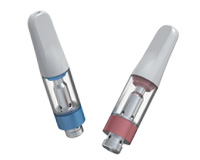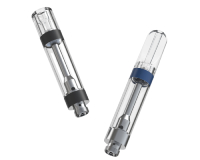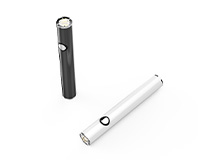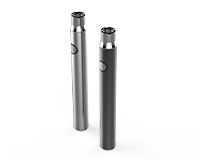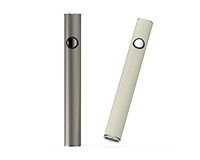How and Why Does Heavy Metal Leaching Occur in Your THC Vape?

Vaping cannabis extracts has become one of the most common ways to consume THC today. While vape hardware technology has evolved rapidly, concerns around heavy metal leaching in THC vapes continue to surface in both consumer discussions and regulatory testing. Heavy metals are toxic elements that can accumulate in the human body over time, posing serious health risks when inhaled through vapor. To fully understand why this happens and how to avoid it, we need to explore three core questions:
1. Does THC itself contain heavy metals?
2. What vape hardware contributes to potential contamination?
3. What are the warning signs that heavy metals may already be impacting your health?
Does THC Contain Heavy Metals?
The first misconception to clear up is whether THC, the primary psychoactive compound in cannabis, naturally contains heavy metals.
- Cannabis as a bioaccumulator: Cannabis plants are known as hyperaccumulators. This means they have a unique ability to draw elements, including heavy metals, from the soil into their roots, stems, and flowers. Elements like lead, cadmium, arsenic, and mercury can be absorbed if they are present in the soil or water.
- Concentration during extraction: Once harvested, cannabis is processed into oils or distillates. During extraction, cannabinoids and terpenes are concentrated—but so are any contaminants that may exist. If the raw plant material contained heavy metals, they can carry over into the oil, even if only in trace amounts.
- Testing regulations: Most regulated cannabis markets now require heavy metal testing at both the cultivation and finished product stages. Oils that exceed maximum allowable limits are prohibited from being sold. However, not every region has strict oversight, and untested black-market products are far more likely to contain unsafe levels.
Key takeaway: THC itself does not inherently contain heavy metals. The presence of heavy metals in cannabis extracts depends largely on the growing conditions, soil quality, and manufacturing standards of the producer.

What Vape Hardware Contributes to Heavy Metal Leaching
Even if the cannabis extract itself passes purity tests, heavy metals can still enter the vapor through the low-quality THC vape hardware. This happens when components that come into direct contact with the oil or heating process leach trace metals into the extract over time. Let’s break down the most common risk points:
1. Mouthpiece
The mouthpiece is the part of the vape cartridge that directly touches the lips. While most modern cartridges use food-grade plastics, ceramic, or stainless steel, low-quality designs may incorporate materials with trace heavy metals.
- Safe scenario: Mouthpieces made from certified food-grade materials typically do not leach.
- Risk scenario: Poorly manufactured metal mouthpieces, or decorative coatings, may release contaminants after repeated heating cycles.
2. Oil Chamber (Tank)
The oil chamber stores cannabis extracts until vaporization. These are usually made from glass or polycarbonate.
- Safe scenario: Glass and high-quality PC are generally inert, offering no pathway for heavy metals to enter.
- Risk scenario: Some inferior plastics may contain additives with heavy metals that slowly seep into the oil, especially when exposed to solvents and heat.
3. Center Post (Central Rod)
The central rod is one of the most critical areas of concern because it is constantly submerged in cannabis oil and directly connected to the heating coil.
- Safe scenario: Stainless steel or other medical-grade alloys that pass regulatory tests.
- Risk scenario: Cheap alloys containing nickel, lead, or cadmium. These materials may corrode under high heat and release contaminants into the oil.
4. Ceramic Heating Core
Ceramic heating elements have become the industry standard because they provide even heating and better flavor. But ceramics vary in quality:
- Safe scenario: High-grade ceramic cores that are independently tested and proven free of heavy metals.
- Risk scenario: Low-quality ceramics may be produced with glazes or stabilizers containing lead. Under repeated high-temperature use, these metals can leach into the oil and subsequently into the vapor.
Key takeaway: While cannabis oil may start clean, the hardware itself can be the main source of contamination. This is why reputable brands invest in certified cannabis vaporizer manufacturers and repeated quality testing.

What Are the Signs of Heavy Metals in Your Body?
Inhaling heavy metals may not cause immediate noticeable symptoms, but over time these toxic elements can build up in the bloodstream and organs. The effects vary depending on the type of heavy metal and the level of exposure, but here are some common signs:
Lead Poisoning
Fatigue, irritability, difficulty concentrating, abdominal pain, high blood pressure, neurological damage.
Cadmium Exposure
Shortness of breath, weak bones, kidney damage, cancer risk.
Mercury Exposure
Tremors, mood swings, impaired vision/hearing, nervous system damage.
Arsenic Exposure
Skin lesions, numbness, gastrointestinal issues, cardiovascular risk.
General Symptoms of Heavy Metal Toxicity
Headaches, metallic taste, weight loss, compromised immunity.
Final Thoughts
Heavy metal leaching in THC vapes is not caused by THC itself but rather by environmental cultivation factors and hardware materials flaws. It can be free of contaminants at the lab, only to become compromised when storing cannabis vape oil inside poorly manufactured cartridges.
For consumers, the safest approach is to:
- Purchase from licensed, regulated dispensaries.
- Look for brands that publish third-party heavy metal test results.
- Avoid suspiciously cheap or unbranded cartridges.
For businesses, investing in tested, compliant hardware is not just a regulatory requirement but also a long-term strategy to build trust.
By understanding how and why heavy metal leaching occurs, both consumers and brands can make safer choices and ensure that vaping remains a cleaner, healthier alternative to combustion.




